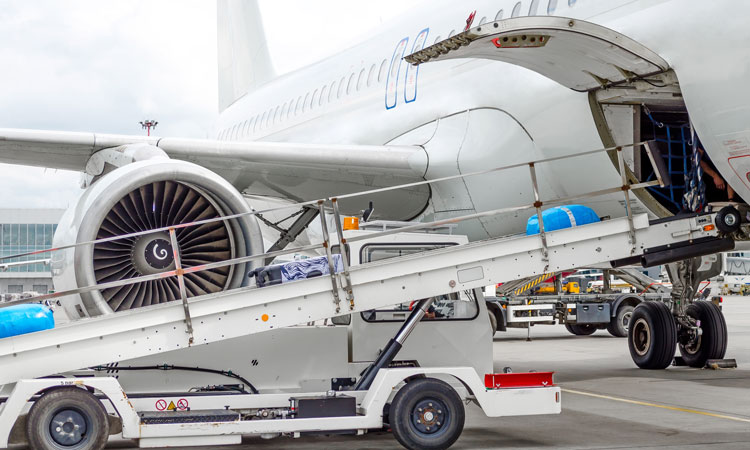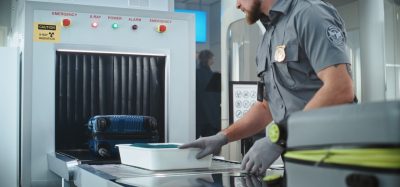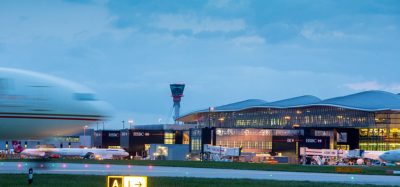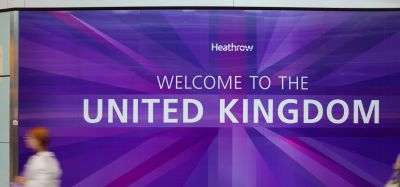Baggage handling: The secret life of luggage through the airport
Posted: 6 March 2019 | Andrew Price | No comments yet
It has been a busy few years for baggage. Resolution 753, which introduced baggage tracking as a common industry capability, came into effect on 1 June 2018. The run up to its introduction involved a lot of work ensuring that airlines and airports were aware of the new tracking requirements. Not all airlines have implemented tracking, so where is the industry today? Andrew Price, Head of Global Baggage Operations at IATA, discusses.


Resolution 753
IATA has undertaken workshops and webinars to ensure that all members are aware of the requirements of Resolution 753 (R753). Many airlines are already sharing their implementation plans with IATA, and our recent airline survey showed that most airlines believe that the R753 implementation will be globally complete within three years.
Resolution 753 does not say how baggage tracking should be undertaken. This is because every airport’s business model is different, and therefore every implementation of R753 tracking points is slightly different. The principle behind the resolution is to give greater insight into the flow of baggage to the airline and allow operational issues to be addressed before they cause mishandled baggage. The basic tracking points in 753 are enough to satisfy several operational issues such as baggage not having time to connect and closing the baggage journey by having a final point of scan on arrivals. However, there is a need for greater visibility in the areas around the edges of the baggage systems such as at inputs and in processing areas.
The identification challenge
The obstacle to greater visibility in baggage operations is a lack of data on individual bags. The use of a barcode in baggage was both a great step forward and also a major impediment to baggage operations. The Interleaved 2 of 5 (ITF) format has no error correction, making scanning less accurate than it is with modern barcodes, like Code 128. Furthermore, scanning a barcode needs either expensive automatic barcode readers or the barcode to be manually scanned by an operator. The barcode format did however enable sortation to be developed.
Join us live: Shaping the Next Generation of Hold Baggage and Air Cargo Screening
Join us live for an insightful webinar on 11th December at 14:00 GMT, in collaboration with Smiths Detection, as we explore the strategic balance of operational efficiency, regulatory compliance, and sustainability in high-volume security environments.
This session offers a focused look into future-proofing your security strategy.
Key learning points
- Cost Reduction: Strategies to minimize bag travel time while simultaneously reducing operational costs.
- Regulatory Roadmap: Insights into the next wave of regulatory changes and their impact on future investment decisions.
- Sustainable Systems: Practical approaches to building sustainability into security systems and lowering the total cost of ownership (TCO).
- Scalable Solutions: Real-world examples of scalable systems supporting current airport growth and preparing for tomorrow.
Register now for expert insights, case studies, and actionable strategies on operational efficiency!
Radio frequency identification
This is where radio frequency identification (RFID) comes in. Unlike barcodes, RFID does not need expensive readers or human intervention to read bags in any desired location. By using RFID, it becomes possible to gain visibility of baggage in other areas such as transfer, arrivals, RUSH and problem processing, and in out-of-system processes, which is where baggage is often mishandled.
The challenge with RFID implementation has always been that without the necessary infrastructure to read the tags and industry-wide commitment to investing in RFID technology, adoption was not necessarily commercially viable. This issue may be overcome if the airlines adopt an IATA resolution committing to industry-wide RFID adoption at the next IATA annual general meeting, in June 2019.
Many airports are already considering the use of RFID and the necessary infrastructure to read baggage labels. It is expected that a full transition to RFID would take three years.
Messaging impacts
Increased visibility of baggage operations brings more than just RFID to the airport and airline. Visibility requires communication, and communication for baggage means messages. There has already been a marked increase in the proliferation of Type B messages associated with baggage movements, and the costs that come with them. Being text-based, there is very little checking on the content of the data fields and this can lead to issues when processing baggage.
These two reasons lead to the introduction of a new message format, XML. The IATA baggage XML scheme is generated from the Airline Industry Data Model and provides a robust and self-checking message that can be sent across the internet. These messages can be sent without the need for dedicated transmission lines or extended VPNs, as the messages can be signed with security certificates in the same fashion as web pages.
Increasing automation
One reason for the interest in having greater information and greater visibility across the baggage journey is to increase baggage automation. Passengers have enjoyed automated processes in other areas for a long time – such as check-in and rebooking during flight disruption. Baggage automation is limited to storage and robotic loading today but will be expanded in the future. Rebooking is a critical area for automation; when a passenger changes their flight, or an airline rebooks a passenger, the airline needs to also rebook the baggage. This is a complicated process because the baggage system may well have sent the bag to the originally-planned destination. In these instances, the bag is sitting on a carousel, a lateral, in a chute or maybe even on the outbound aircraft. The baggage operators must quickly ascertain the location of the bag and the intended flight, post the rebooking process. In these instances, the information on the bag leads the actual physical state of the bag, and the instruction needs to be acted upon by the baggage handlers.
Additional services
Baggage operations are also a great area for the creation of new services. New baggage services can include things like collecting a bag from the passenger’s home and delivering it to the end journey point. Baggage services are the next area for business model exploration, as they offer a mechanism for airlines to offer additional value for the journey, beyond simple carriage of the bag. Perhaps someday a passenger will be able to arrange for their luggage to be collected from their hotel at the end of a vacation and delivered to their home with the contents laundered and pressed, ready for their next trip.
Towards a digital twin
A true digital twin is a digital replica of a physical object, including characteristics such as the size, shape, position and state of the object. RFID provides only a small part of this digital twin, as RFID is blind to the colour, size and shape of a bag. Optical systems might be used to gather this information and fill in the missing components of a true digital twin, which could be useful when it comes to settling damage claims. What RFID does do, is provide a means to know the location and processes that have been completed on a bag, which will be incredibly useful in optimising baggage operations and reducing mishandling. An operational digital twin for a bag should also describe the desired state of the bag and highlight if something needs to be done to achieve this, as in the case of rebooking.
Freedom for baggage
All the things mentioned so far have some impact on the cost of baggage operations. It is therefore also time to look at how the bag can be processed more efficiently overall. This is where we start to look at freedom for baggage. This means that the airline is able to route the bag by whatever mechanism delivers the bag to the needs of the passenger – be that to a reclaim carousel or to a hotel. It could mean routing the bag by road rather than by air, for some journeys, or sending a bag on another flight – even another airline – if that enables more cargo to be carried (or other revenue generating activities) on the passenger’s flight. There has to be a lot of regulatory change, and a recognition that Standard 3 screening ensures that baggage is safe for carriage regardless of the carriage of the passenger, to enable this to happen.
Conclusion
Tracking bags, and Resolution 753, is the starting point for this entire journey into the future of baggage operations, and at the heart of everything that has been discussed here. RFID will simplify collecting tracking data, whilst XML reduces the cost of getting the data into a system. These open the doors to greater automation, new products and services and greater operational freedom which are all aspects of what baggage has to become – an efficient, revenue generating, value added service for passengers.
Biography
Andrew Price is the Head of Global Baggage Operations at IATA. He has worked in the area of baggage and airport operations for over 20 years, having undertaken every job from handling bags through to designing terminals. Whilst at IATA Andrew has led programmes such as the IATA Baggage Improvement Programme, which led to an industry-wide baggage mishandling reduction of over 50 per cent. Prior to joining IATA in 2005 Andrew held positions at British Airways and Siemens Air Traffic Management. Along with other qualifications and professional awards, Andrew holds an Msc degree in Business Administration and a Bsc degree in Engineering.
Stay Connected with International Airport Review — Subscribe for Free!
Get exclusive access to the latest airport and aviation industry insights from International Airport Review — tailored to your interests.
✅ Expert-Led Webinars – Gain insights from global aviation leaders
✅ Weekly News & Reports – Airport innovation, thought leadership, and industry trends
✅ Exclusive Industry Insights – Discover cutting-edge technologies shaping the future of air travel
✅ International Airport Summit – Join our flagship event to network with industry leaders and explore the latest advancements
Choose the updates that matter most to you.
Sign up now to stay informed, inspired, and connected — all for free!
Thank you for being part of our aviation community. Let’s keep shaping the future of airports together!
Issue
Related topics
Aeronautical revenue, Airside operations, Baggage handling, Communication Technology, Ground handling, Information technology (IT), New technologies, Passenger experience and seamless travel, Regulation and Legislation, Terminal operations


















